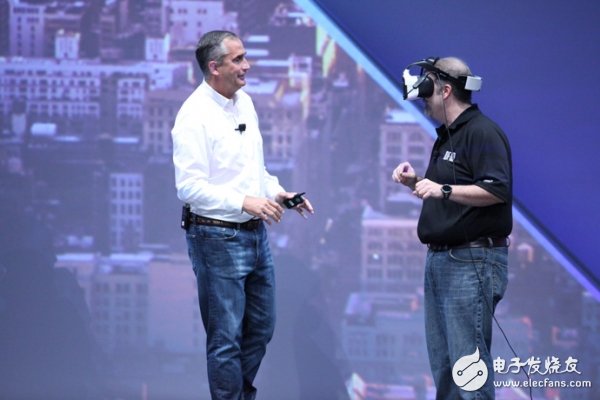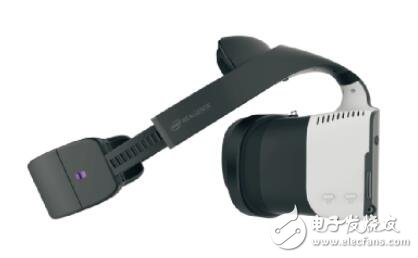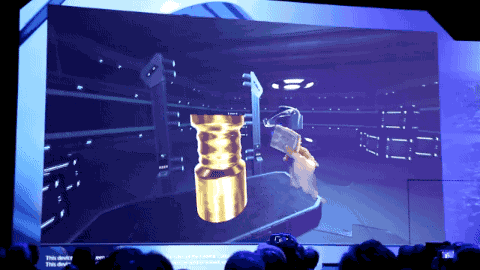After missing the opportunity of the mobile era, Intel is more proactive in the face of the Internet of Things and virtual reality market opportunities. At the 2016 Intel Information Technology Summit (IDF 2016) in San Francisco, USA on August 16th, Brian M. Krzanich described Intel's vision of driving the world of Merged Reality.
In the past few years, virtual reality and augmented reality have become mainstream. Market research firm IDC expects global augmented reality (AR) and virtual reality (VR) market revenues to expand from the current $5.2 billion to $162 billion by 2020. This means that the global AR/VR market will grow at an annual growth rate of 181.3% in the next five years.
However, for most of the current virtual reality and augmented reality technologies, how to integrate real body movements, environments and virtual objects, environments and actions still faces enormous challenges. Ultimately, current virtual reality is not really that virtual. Often, you need a lot of complicated controls, lots of sensors and cameras, and manual controls.
The Alloy project, announced by Intel in the opening keynote speech at IDF 2016, is an all-in-one virtual reality solution that uses Intel RealSense technology.
Alloy project to create an integrated virtual reality solution
Merged Reality is a new way to experience the interaction between physical and virtual environments with a complete set of next-generation sensing and digitization technologies. Alloy clearly demonstrates the future of Merged Reality and redefines the possibilities of an integrated virtual reality platform.
Alloy offers a whole new set of immersive experiences:

Freedom of operation: Getting rid of the cumbersome cables that connect virtual reality helmets and computers will become a reality. The Alloy Headset (HMD) is equipped with a desktop-class Core 6 processor with resolutions up to 1080p. The powerful Core 6-generation processor supports higher resolution displays and the processor can be updated to the latest in the future. The i7-7700K eliminates the need to rely on an external computer host for rendering like Oculus or HTC Vive, allowing users to experience virtual reality without any restrictions. This means that the user can cut off the "wire of the virtual reality device" and achieve any movement of six degrees-of-freedom in a larger space. Combined with collision detection and collision avoidance analysis, users can explore virtual space through body movement.
· Immersive experience: By integrating reality, users can see their hands, friends and even the wall in front of them. With Intel RealSense technology, people can not only see these elements in the real world, but also interact with the elements of the virtual world by hand to form a fusion reality experience.
No external sensors: Built-in two RealSense cameras eliminate the need to rely on any external sensors or cameras in the room, and the Intel RealSense camera connected to the helmet makes Alloy's fusion reality possible.

In addition, Intel is working with Microsoft to optimize the content and experience of Windows*-based operating systems on virtual reality devices such as Alloy that use Intel technology.
Intel will open Alloy hardware in 2017 and provide an open application programming interface (API) for ecosystems, allowing developers and partners to design and develop their own branded products using Alloy.
How is the Alloy experience?
After wearing the Alloy headlight, the user "sees" his hands in the virtual environment through the RealSense camera, and can directly use his hands to interact with the virtual world, such as opening the door, using tools, and so on.
It can even capture graphical information about a banknote: in the demonstration, the worker pulls out the banknote from the pocket and rubs it against the turntable in the virtual scene, and then observes a virtual splash of sparkle.

â–² Realistic objects can also be mapped to virtual worlds
However, Alloy's live performance is not perfect, except for the mosaics that RealSense often talks about, the delays and the state of the integration reality are more obvious. However, since its release, Intel has been pushing the RealSense real-world technology based on 3D cameras to finally come in handy!
Axial Metallized Polyester Film Capacitors
capacitor,Metallized Polypropylene Capacitor,Small Size Capacitor,X-ray Euipment Capacitor
XIAN STATE IMPORT & EXPORT CORP. , https://www.capacitorhv.com
